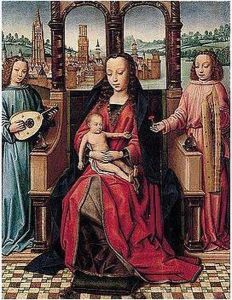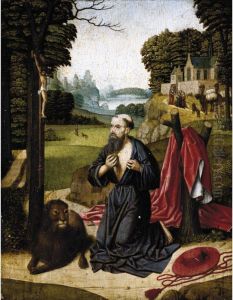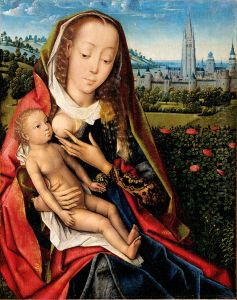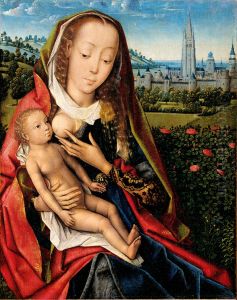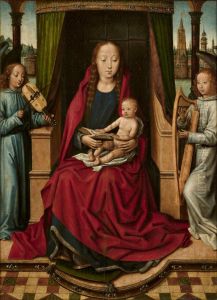Master Of The Legend Of Saint Lucy Paintings
The Master of the Legend of Saint Lucy is a name given to an unidentified Early Netherlandish painter who was active in Bruges from about 1480 to 1500. This master is named after a series of paintings depicting the life of Saint Lucy, which are considered some of his most notable works. The artist's real name has been lost to history, and he is known only through his surviving works, which exhibit characteristics typical of the Bruges school of the time, such as a refined use of color and attention to detail.
The Master of the Legend of Saint Lucy's work is characterized by its intricate detail, use of vibrant colors, and the realistic representation of textures and materials. His paintings often contain religious themes, which was typical for the period, with a particular focus on the lives of saints and the Virgin Mary. The master's artwork also reflects the influence of other prominent artists of the time, such as Hans Memling, with whom he may have trained or collaborated.
Due to the lack of clear records, much about the Master of the Legend of Saint Lucy's life and career remains unknown, including his training, the exact scope of his oeuvre, and the details of his artistic development. Art historians have attributed various works to this master based on stylistic similarities and thematic connections, but his identity remains one of the many enduring mysteries of art history.
Because of the anonymity of the artist, it is not possible to provide precise birth and death dates. Scholars have estimated the active period based on the style of the paintings and the dates of events that are depicted or referenced in his works. Despite the absence of concrete biographical information, the Master of the Legend of Saint Lucy is recognized for his contributions to the Northern Renaissance and the rich artistic heritage of Bruges.
